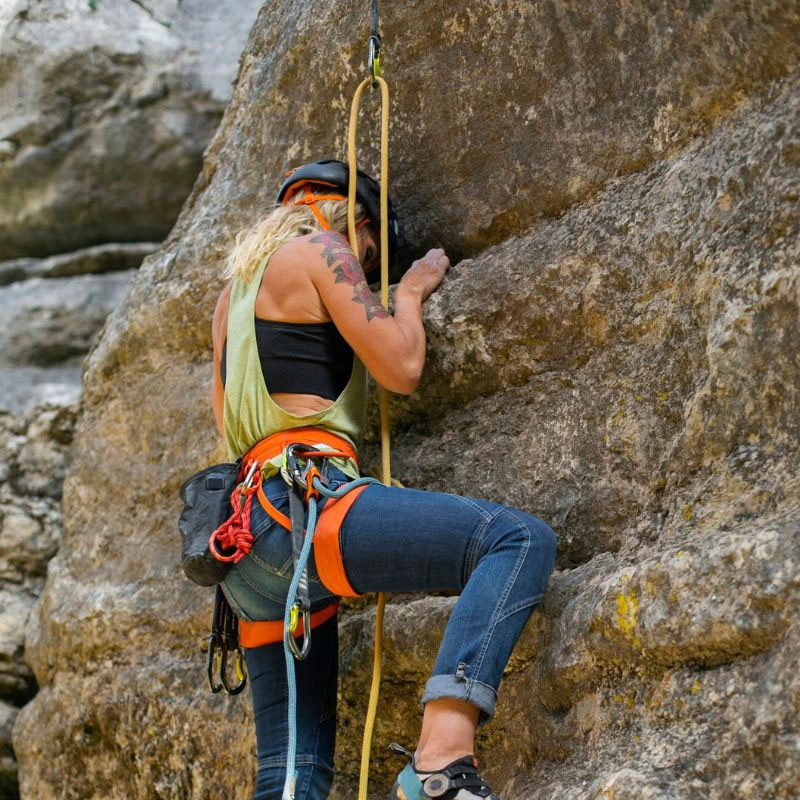Sport climbing is an exhilarating and physically challenging sport that tests not only your body but also your mind. This article will provide a comprehensive guide on mastering the techniques and understanding the essential gear in sport climbing.
Understanding the Basics of Sport Climbing
Sport climbing is a form of rock climbing that relies on permanent anchors fixed to the rock for protection. Compared to traditional climbing (trad) and bouldering, sport climbing uses bolts, so you don’t have to place protection as you climb.
Top 3 Facts about Sport Climbing
- Sport climbing is the fastest-growing form of climbing in the United States, with the number of participants increasing by more than 50% from 2012 to 2017.
- In 2019, the United States had more than 2.5 million sport climbing participants, making it the most popular form of climbing in the country.
- The number of sport-climbing gyms in the United States has grown from just over 100 in 2012 to more than 500 in 2020.
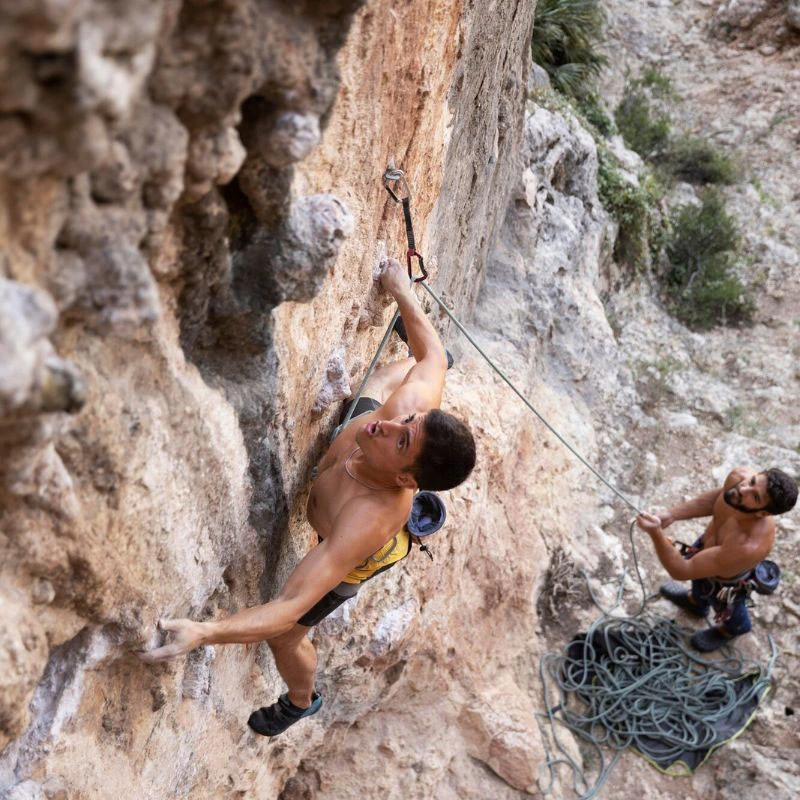
The Physical and Mental Aspects of Sport Climbing
A proficient sport climber needs a combination of strength, endurance, flexibility, and mental fortitude. Regular gym workouts can improve physical fitness, while mindfulness practices can enhance focus during a climb.
In-Depth Look at Sport Climbing Techniques
Effective climbing techniques can transform a difficult climb into a manageable one. The basics include proper foot placement and body positioning. Advanced techniques include dynamic movements such as overhang climbing, which involves climbing routes that are steeper than vertical. Regularly practicing these techniques on different routes and walls can significantly enhance your climbing efficiency.
Essential Gear for Sport Climbing
Understanding your gear is a vital part of sport climbing. Your harness, rope, and carabiners are fundamental to your safety. Special attention should be given to selecting climbing shoes that fit well, as they can significantly affect your climbing ability. A reliable helmet is also critical to protect you from falling debris or in case of falls.
Importance of Safety and Risk Management
While the thrill of sport climbing can be intoxicating, it’s essential never to lose sight of safety. Knowledge of common risks and proper use of safety gear like belay devices and crash pads is crucial. A basic understanding of first aid can also come in handy during emergencies.
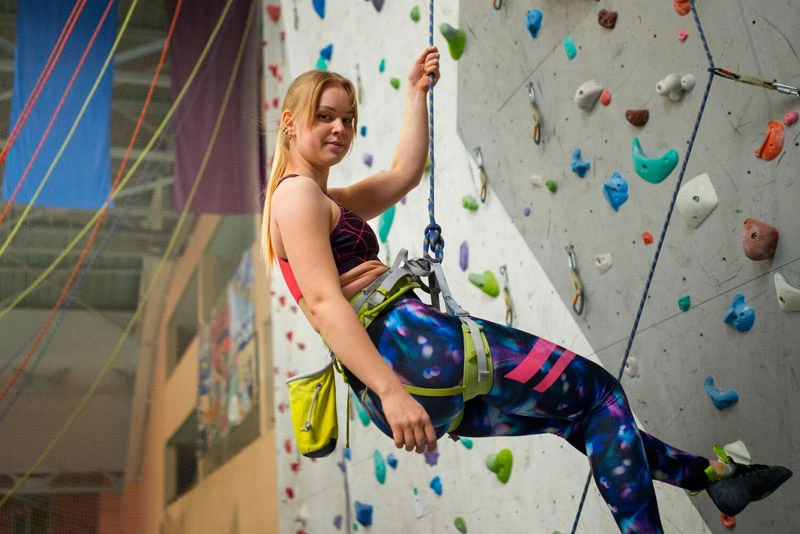
Tips for Training and Progression in Sport Climbing
Training regularly and allowing adequate rest periods is the key to progress in sport climbing. A balanced diet will also aid in muscle recovery and increase endurance. Paying attention to technique while practicing, whether on the boulder, slab, face, or arete, can significantly improve your ability to send, flash, or redpoint your project.
Getting Involved in the Climbing Community
Being part of the climbing community can be a rewarding experience. It’s a great way to learn, share information, and grow as a climber. Practicing good sport climbing etiquette, like leaving no trace at the crag or taking turns on popular routes, is also essential. Participation in climbing events or competitions can push your boundaries and enhance your skills.
To sum it up, mastering sport climbing involves understanding the basics, honing your techniques, knowing your gear, and ensuring safety at all times. It requires both physical strength and mental agility, with a dash of community spirit. Armed with the right knowledge and the right attitude, you are well on your way to becoming a proficient sport climber.
Choosing Your Climbing Route
Choosing the right sport climbing route involves considering your physical capabilities and experience level. For beginners, a route with less overhang and more face or slab might be easier to tackle. More experienced climbers can challenge themselves with tougher routes, including overhangs, cracks, and aretes.
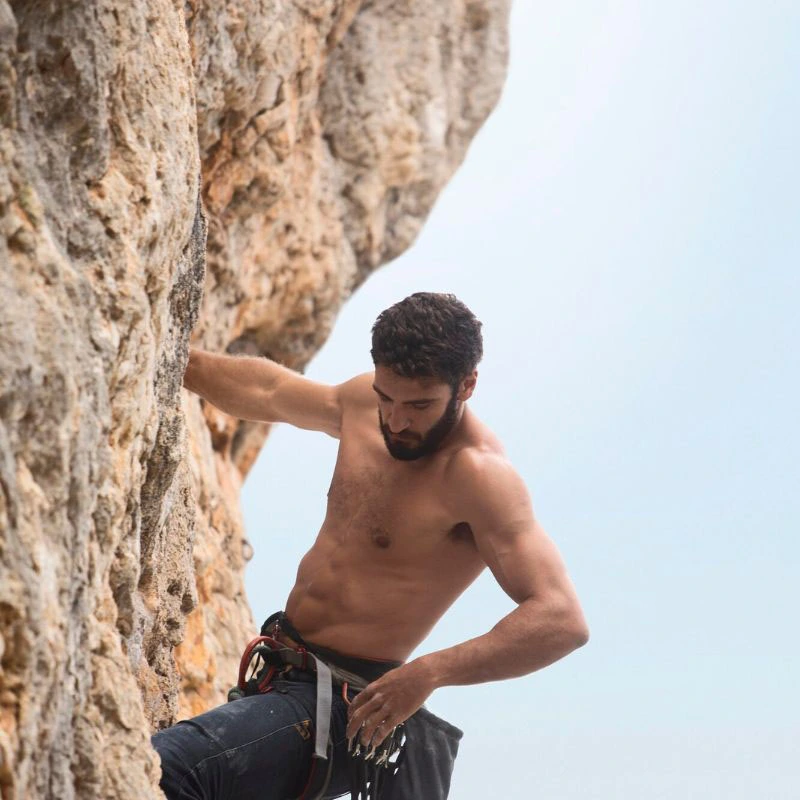
A Brief Guide to Sport Climbing Lingo
The language of sport climbing can seem like a different dialect, filled with words like “send,” “onsight,” “redpoint,” “flash,” and “project.” Understanding these terms can be useful in communicating with other climbers and understanding climbing-related information.
Sport Climbing vs. Bouldering: What’s the Difference?
Sport climbing and bouldering are two popular forms of climbing. While they share many similarities, they differ in crucial ways.
Bouldering usually involves shorter climbs over crash pads, whereas sport climbing involves longer routes with protection from bolts and a rope. Understanding the differences can help you choose which form is right for you.
Gearing Up: Understanding Climbing Equipment
Climbing gear for sport climbing includes a variety of items, all with specific purposes. Knowing your gear and how to use it correctly is critical for safety and efficiency on the climb. Harnesses, shoes, ropes, chalk, belay devices, quickdraws, and helmets are all necessities for sport climbing. Tough hook hangers have played a vital role in carrying out all these effectively.
Sport Climbing Competitions and Events
Whether it’s speed climbing events or the thrill of a climbing competition, sport climbing can be much more than just a hobby. Joining these events is a great way to test your skills, learn from others, and become a part of the climbing community.
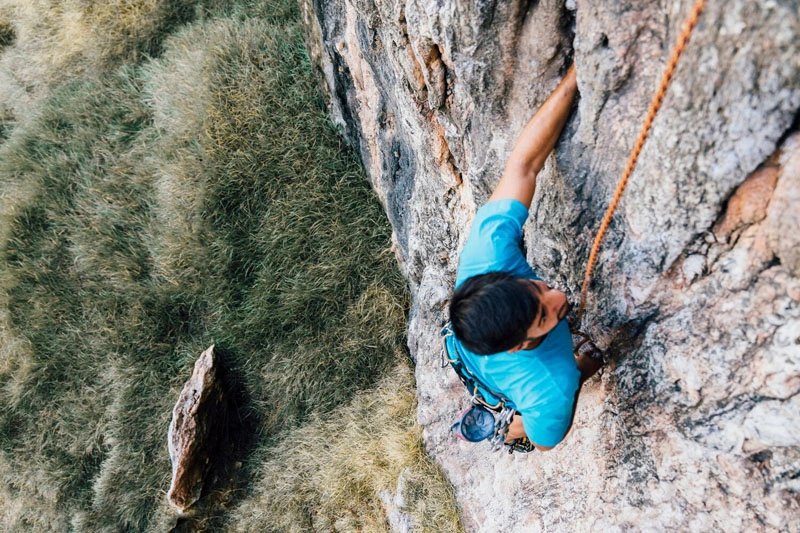
Top 6 Sport Climbing Locations Around the World
Sport climbing has gained popularity all over the world. From the crags of France to the rock faces of the USA, the world is filled with incredible places to climb. We will explore some of the most popular climbing locations and what makes them special for sport climbers.
- Ceuse, France Located in the Hautes-Alpes region of France, Ceuse is renowned for its pristine limestone cliffs and high-altitude climbing. With over 300 bolted routes, it provides a challenge for climbers of all skill levels.
- Kalymnos, Greece Once a sponge-diving hub, Kalymnos now attracts climbers from around the globe to its sheer limestone cliffs. The island’s 3000+ routes offer a variety of climbing styles and difficulties, along with stunning views of the Aegean Sea.
- El Potrero Chico, Mexico Known for its multi-pitch sport routes, El Potrero Chico is a paradise for climbers seeking to tackle tall limestone walls. The area’s moderate winter climate makes it a popular destination for North American climbers during the colder months.
- Yangshuo, China With its unique karst formations, Yangshuo offers a truly distinctive climbing experience. From slab to overhang, you’ll find a plethora of climbing styles amidst the picturesque backdrop of China’s Guangxi region.
- Smith Rock, United States Often regarded as the birthplace of sport climbing in the United States, Smith Rock in Oregon features over a thousand climbs. Its tuff and basalt cliffs cater to all levels of sport climbing, from beginner to advanced.
- Rodellar, Spain Nestled in the Sierra de Guara National Park, Rodellar is a haven for climbers seeking steep overhangs and tufa climbing. Its limestone routes are known for their length and continuous difficulty, offering an exciting challenge for sports climbers.
To conclude, sport climbing is a discipline that requires knowledge, preparation, technique, and, most importantly, passion. Understanding its nuances and respecting its demands can transform you from a beginner into a seasoned climber. Whether you’re practicing in the gym or scaling rock faces outdoors, remember to enjoy the journey as much as the climb itself. Happy climbing!
Frequently Asked Questions
What are bolts in sport climbing?
Bolts are permanently installed anchors in the rock that climbers use to attach their ropes and quickdraws.
What is a climbing harness?
A climbing harness is a piece of equipment that wraps around a climber’s waist and thighs, providing a point to attach the rope and other gear.
What is the role of the belayer in sport climbing?
The belayer manages the rope, ensuring that it is taut enough to catch the climber in case of a fall but loose enough to allow upward progress.
How can I prevent injuries while sport climbing?
Proper technique, use of appropriate gear, adequate physical conditioning, and adherence to safety protocols can help prevent injuries while sport climbing.

